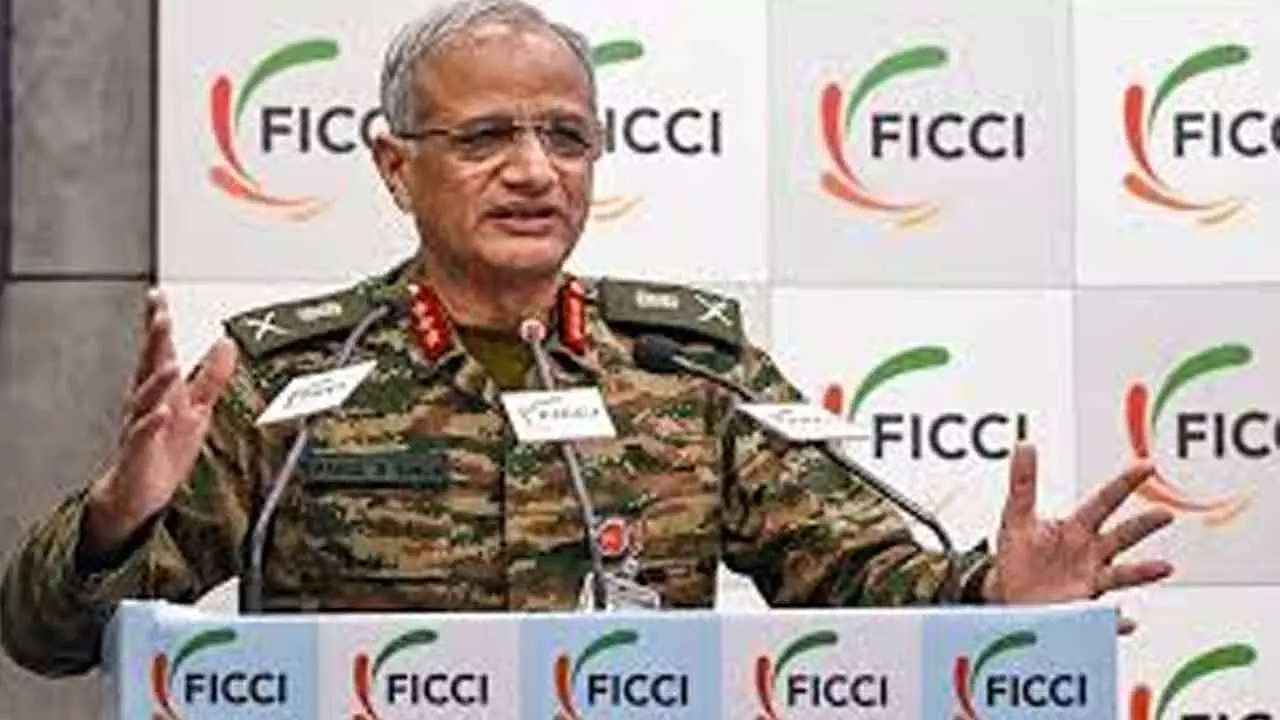China Accused of Feeding Live Intel to Pakistan During Border Standoff, Says Indian Army Deputy Chief
Explosive claims by a top Indian Army General reveal China's direct involvement in providing live intelligence to Pakistan during recent military strikes, reshaping the narrative of regional tensions
China Accused of Feeding Live Intel to Pakistan During Border Standoff, Says Indian Army Deputy Chief

In a startling revelation that pulls back the curtain on the intricate web of alliances and animosities in South Asia, a high-ranking Indian Army official has directly accused China of providing real-time intelligence to Pakistan during recent military strikes. Lieutenant General Rahul R Singh, the Deputy Chief of Army Staff (Capability Development and Sustenance), made these explosive remarks on Friday, marking the first official statement from India implicating China's direct complicity in Pakistani military operations against India, specifically in the aftermath of "Operation Sindoor."
Lt Gen Singh's comments came during the 'New Age Military Technologies' event organized by FICCI, where he laid bare India's "three adversaries" on its northern border: Pakistan, China, and Turkey. He asserted that China is extending "all possible support" to Pakistan, effectively treating the northern border as a "live lab" to test its weaponry supplied to Islamabad. This strategy, he suggested, aligns with China's "36 stratagems," aiming to "kill the adversary with a borrowed knife" and "use the neighbour to cause pain."
A Deepening Nexus: Beijing, Islamabad, and Ankara
The General elaborated on the extent of this triangular cooperation, highlighting Turkey's significant role in bolstering Pakistan's military capabilities. He specifically mentioned Turkey's supply of the Bayraktar unmanned combat aerial vehicle, "numerous other drones," and even "trained individuals" to Pakistan. According to Lt Gen Singh, Pakistan serves as the "front face" in this proxy engagement, with China providing "all possible support." This comes as no surprise, he noted, given that Chinese military hardware constitutes a staggering 81% of Pakistan's procurements over the past five years.
"China, of course, adheres to the good old dictum... killed by a borrowed knife," Lt Gen Singh explained. "He would rather use the neighbour to cause pain than get involved in the mud-slinging match on the northern borders." He further suggested that China views this as an opportunity to test its weapons systems against various others, likening it to a "live lab."
The Crucial Role of C4ISR and Strategic Messaging
The revelations underscore the critical importance of C4ISR (Command, Control, Communications, Computers, Intelligence, Surveillance, and Reconnaissance) and civil-military fusion. Lt Gen Singh cited an unsettling instance during Director General of Military Operations (DGMO)-level talks where Pakistan demonstrated uncanny awareness of Indian operational deployments. "When the DGMO-level talks were going on, Pakistan was mentioning that we know that your such and such vector is primed and is ready for action," he recounted. "He was getting live inputs as far as from China." This, he stressed, is an area where India must urgently accelerate its efforts and take decisive action.
Shifting focus to electronic warfare and air defense, Lt Gen Singh emphasized the imperative to protect India's population centers. While "Operation Sindoor" did not target these areas, he warned of the need for preparedness. "For that, more and more air defense, more and more counter rockets, artillery, and drone sort of systems have to be prepared for which we have to move very, very fast," he urged. He acknowledged that while indigenous systems performed well, some did not, highlighting the "cat-and-mouse game" that demands continuous adaptation. Unlike Israel with its Iron Dome, India, due to its vastness and financial constraints, lacks the luxury of deploying extensive air defense systems across the entire nation.
A defining characteristic of "Operation Sindoor," according to the General, was the unambiguous strategic messaging from India's leadership: "You cross our red lines, and there will be action. There will be punitive action, if required." This marked a significant departure from past responses, signaling that "there is no scope of absorbing the pain the way we did a few years ago."
Precision, De-escalation, and a "Hidden Punch"
The planning and target selection for "Operation Sindoor" were meticulously executed, relying on extensive data gathered through both technological means and human intelligence. Out of 21 identified targets, nine were deemed prudent for engagement. The decision to strike these specific targets was made in the "final day or the final hour," reflecting a "considered decision" to adopt a tri-services approach. This ensured a unified message from the Army, Navy, and Air Force, showcasing India's integrated force capabilities.
Crucially, an important consideration was remaining at the top of the escalation ladder and knowing when to halt once a political-military objective had been achieved. Addressing "naysayers" who questioned the cessation of hostilities, Lt Gen Singh sagely remarked, "War is easy to initiate, but it’s very difficult to control. A very masterly stroke that was played to stop the war at an appropriate time."
India conveyed to Pakistan that only terrorist targets had been engaged and the operation had concluded. However, Pakistan opted for escalation, engaging Indian military targets. This, Lt Gen Singh revealed, triggered "step two of the escalation," wherein India retaliated by engaging Pakistani military targets. The effectiveness of this counter-response was evident, as on May 10, Pakistan's military operations leadership sought a ceasefire, realizing that a "hidden punch" from India would put them in a "very, very bad condition."
Echoing these sentiments, Lt Gen Amardeep Singh Aujla, the Army's Master General Sustenance, also spoke at the event, underscoring how evolving geopolitical dynamics and rapid technological advancements are making modern warfare increasingly intense and complex. "Op Sindoor has underscored the value and importance of these new war-fighting practices that are currently in vogue, whether it is related to precision or speed," he stated. He highlighted the convergence of kinetic and non-kinetic means, emphasizing the growing significance of drone and counter-drone warfare. This, he concluded, highlights the ongoing need for the Indian Army to assess and scale up its engagement with new-age technologies to prepare for the future of warfare.

